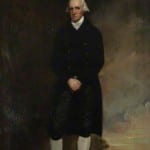The Afterlife of Objects: Anglo-Indian Ivory Furniture in Britain
By Kate Smith
Please note that this case study was first published on blogs.ucl.ac.uk/eicah in July 2014. This study was updated by the project team on 20 October 2016.
For citation advice, visit ‘Using the website’.
The term ‘ivory’ describes the teeth or tusks of elephants and other mammals, including the Asiatic and African boar, the Artic walrus, hippopotamus, warthog and whale. Ivory is a dense material that can be carved, engraved, turned, pierced and painted, and it has the strength and elasticity required for use both as a solid material and a veneer. In the Indian context, hunters removed ivory from the upper front tusks of the elephants found across the subcontinent, from the foothills of the Himalayas to the southern tip of Ceylon.[1] This case study explores the objects made from these tusks. It particularly focuses on the furniture pieces, made by skilled craftsmen in the subcontinent during the eighteenth century. Although Europe had a long tradition of ivory goods, often made from African and Asian elephant ivory (which was imported to Europe in greater quantities from the 1500s onwards), the skills Indian craftsmen used to make ivory furniture presented European consumers with new and desirable aesthetic options.[2] Ivory furniture can thus act as a lens through which to examine how individuals in the modern period related to objects from the subcontinent. More particularly, ivory furniture is useful in considering a question central to The East India Company at Home project: wereobjects purchased by East India Company (EIC) families understood as distinct from those traded more generally by the EIC? If so, how? This analysis seeks to show that although these objects were increasingly made to European forms, contemporaries in Britain understood that ivory furniture represented a family’s link to the subcontinent and more particularly signalled the gains of an EIC career. Furthermore, it demonstrates that ivory furniture continued to act as a prompt for retelling EIC family narratives long after the family members with links to the Company had died. Like Company families, Company objects played important roles in British cultural and social life. Like the families who bought, collected and retained them, Company objects experienced complicated and global biographies, which shaped British material cultures long after the initial point of exchange.
The range of Indian ivory furniture found in the collections of British museums, such as the V&A, as well as private collections, reflects eighteenth- and nineteenth-century Britons’ widespread desire to possess these exotic luxury goods. As Anne Gerritsen and Stephen McDowall warn in the case of porcelain, however, the survival of many items in museum collections should be treated with caution and should not be understood as unproblematic evidence of historical popularity.[3] Yet compared to better-known large-scale imports such as porcelain and textiles, ivory furniture’s seeming ubiquity is noteworthy precisely because the Company did not trade in it. In contrast to widely traded commodities like textiles and porcelain, ivory furniture generally came to Britain through individual purchases made by EIC servants while in India. Whereas men and women in Britain could commission armorial porcelains, items of ivory furniture tended to be purchased by families or individuals while in India or when trading on the Indian coast. Given these modes of purchase, did British men and womenunderstand ivory furniture as distinctly different from widely traded commodities?
Such questions can be answered through exploring the ivory furniture purchased by a variety of families. From the Harrisons in the early eighteenth century, to the Monros and Hastings in the late eighteenth and early nineteenth century and from the Morrisons in the nineteenth century to the Kleinworts of the twentieth century and the Peakes of the twenty-first. Inventories, auction catalogues, correspondence, newspaper articles and sales reveal that all these families have purchased or retained ivory furniture pieces. Through analysing these sources it is possible to understand how and why ivory furniture came to represent East India Company connections and histories in the eighteenth, nineteenth, twentieth and twenty-first centuries.
 Purchase
Purchase
In the early eighteenth century East India Company Governors such as Edward Harrison and Richard Benyon, purchased ivory furniture while in India. These pieces linked these men and their families to Madras and the Coromandel Coast and were passed between family members. Not all ivory furniture pieces, however, stayed within East India Company families, East India Company servants also purchased them to be later gifted or sold.
 Sale
Sale
Examining the sale of ivory furniture on the British market allows us to examine the role that objects, such as ivory furniture, played in consolidating links that others perceived as existing between individuals and empire. During the sale of Warren Hastings’ estate, Daylesford, in the 1850s, ivory furniture was of particular importance in providing signifiers that clearly linked Hastings to empire.
 Recirculation
Recirculation
By studying examples of ivory furniture situated in British country houses in the nineteenth, twentieth and twenty-first centuries, we can begin to understand the changing positions that objects such as these held for contemporaries as they moved further from their Indian and East India Company origins.
 Conclusion
Conclusion
Uncovering these histories is important in demonstrating the ways in which objects from the subcontinent acted as sites upon which and through which contemporaries recognised that familial links to the East India Company and empire. Becoming entangled in different forms of meaning making, these objects came to embody empire.
To read this case study as a PDF, click here.
Acknowledgements
The text and research for this case study were primarily authored by Research Fellow Kate Smith.
[1] Amin Jaffer, Luxury Goods from India: The Art of the Indian Cabinet-Maker (London: V&A Publications, 2002), p. 125.
[2] Kirsten A. Seaver, ‘Desirable teeth: the medieval trade in Artic and African ivory’, Journal of Global History, 4:2 (2009), p. 276.
[3] Anne Gerritsen and Stephen McDowall, ‘Global China: material culture and connections in world history’, Journal of World History, 23:1 (2012), p. 5.